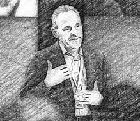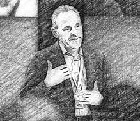The future of health care: customer insights drive innovation in radiology
November 08, 2016
The global health care markets continue to transform rapidly, and radiology is no exception. Recently, we have seen greater emphasis on disease-specific applications, simplified use enabled by intelligent workflow with better connectivity, and total cost of ownership all without compromising the quality of care. The overarching requirement is to "do more with less" through a "first-time-right" approach that enables an efficient and definitive decision-making process.
Radiologists are moving from the traditional transactional role in disease detection, localization, staging, planning and treatment assessment, to becoming a part of each longitudinal patient journey. We spend a great deal of time listening to our global customers. Although each may have specific needs, we also hear much similarity.
Here are the three most important areas the radiology community has defined as priorities:
1) As radiology grows, so does the amount of operational, financial and clinical data that exists across the health care system. The data is not readily interoperable or available to the staff. While there is a wealth of data in hospitals, it needs to become actionable information in critical areas like operational performance and variability. We foresee solutions that enable the delivery of customized, data-driven management approaches that combine imaging with services, informatics and analytics to provide insights within the existing workflow.
2) Imaging equipment maintains the reputation of being cumbersome and challenging to operate. By designing related software and smart algorithms with the radiologist's and staff's daily workflow in mind, we can enable practitioners to operate the equipment more efficiently and effectively. When practitioners are able to easily take advantage of new, advanced digital technology, exam times are shortened, recalls are reduced and images support more accurate diagnoses, ultimately saving costs.
As part of this, improved data sharing and telemedicine services enable hospital systems to collaborate with radiology experts around the world remotely. These new workflows will be game-changers in the pursuit of universal access to specialty care regardless of location, an elusive priority for many health systems and governments.
3) We are seeing more widespread adoption of precision medicine an approach to disease treatment and prevention taking individual variability in genotype, phenotype, environment and lifestyle into account. Today, more hospitals are adopting multidisciplinary views of a patient's cancer. Frequently conducted as a tumor board, these boards take into account the molecular view through genomic understanding of the state of the disease, along with the cellular view provided by histopathology, together with the tissue and organ-level views provided by radiology. Collectively, these insights help to determine the best treatment and the most likely outcome.
In this context, the radiologist plays the critical role of offering insights into the interaction of anatomy and disease processes with the imaging system, and the value of specific imaging biomarkers in the context of the disease. We are also witnessing greater multidisciplinary assessments of neurological and cardiovascular diseases. For example, we are seeing greater utilization of molecular, structural and functional imaging to assess neurodegenerative diseases, and imaging is increasingly combined with clinical and behavioral assessments of these patients in order to stage the severity of disease, and in the selection of therapies.
For health systems to be viable and high-performing in the future, a sustainable imaging enterprise, plus the seamless integration of clinical systems with data-driven understanding of the practice, is a fundamental requirement.
About the author: Rob Cascella is the CEO, diagnosis and treatment businesses, at Philips.
Radiologists are moving from the traditional transactional role in disease detection, localization, staging, planning and treatment assessment, to becoming a part of each longitudinal patient journey. We spend a great deal of time listening to our global customers. Although each may have specific needs, we also hear much similarity.
Here are the three most important areas the radiology community has defined as priorities:
1) As radiology grows, so does the amount of operational, financial and clinical data that exists across the health care system. The data is not readily interoperable or available to the staff. While there is a wealth of data in hospitals, it needs to become actionable information in critical areas like operational performance and variability. We foresee solutions that enable the delivery of customized, data-driven management approaches that combine imaging with services, informatics and analytics to provide insights within the existing workflow.
2) Imaging equipment maintains the reputation of being cumbersome and challenging to operate. By designing related software and smart algorithms with the radiologist's and staff's daily workflow in mind, we can enable practitioners to operate the equipment more efficiently and effectively. When practitioners are able to easily take advantage of new, advanced digital technology, exam times are shortened, recalls are reduced and images support more accurate diagnoses, ultimately saving costs.
As part of this, improved data sharing and telemedicine services enable hospital systems to collaborate with radiology experts around the world remotely. These new workflows will be game-changers in the pursuit of universal access to specialty care regardless of location, an elusive priority for many health systems and governments.
3) We are seeing more widespread adoption of precision medicine an approach to disease treatment and prevention taking individual variability in genotype, phenotype, environment and lifestyle into account. Today, more hospitals are adopting multidisciplinary views of a patient's cancer. Frequently conducted as a tumor board, these boards take into account the molecular view through genomic understanding of the state of the disease, along with the cellular view provided by histopathology, together with the tissue and organ-level views provided by radiology. Collectively, these insights help to determine the best treatment and the most likely outcome.
In this context, the radiologist plays the critical role of offering insights into the interaction of anatomy and disease processes with the imaging system, and the value of specific imaging biomarkers in the context of the disease. We are also witnessing greater multidisciplinary assessments of neurological and cardiovascular diseases. For example, we are seeing greater utilization of molecular, structural and functional imaging to assess neurodegenerative diseases, and imaging is increasingly combined with clinical and behavioral assessments of these patients in order to stage the severity of disease, and in the selection of therapies.
For health systems to be viable and high-performing in the future, a sustainable imaging enterprise, plus the seamless integration of clinical systems with data-driven understanding of the practice, is a fundamental requirement.
About the author: Rob Cascella is the CEO, diagnosis and treatment businesses, at Philips.


